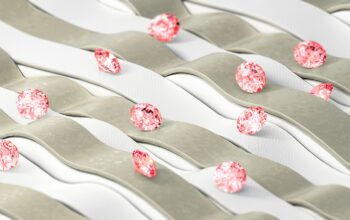As the world increasingly relies on high-speed data transmission, the debate over the handling characteristics of different types of cables—specifically optical fibre cables and traditional copper cables—has garnered renewed attention. One question that often emerges is whether optical fibre cables can be folded in the same manner as copper cables. This inquiry delves deep into the physics of materials, design principles, and practical applications, revealing essential distinctions that shape each cable’s functionality and durability.
To embark on this exploration, one must first comprehend the fundamental differences between copper and optical fibre cables. Copper cables, traditionally employed for electrical signals, exhibit flexibility due to their conductive copper wire structure. Their inherent ductility allows for easy bending without significant degradation of performance. The metal’s malleability means that achieving tight bends, knots, or even convoluted arrangements is frequently feasible without immediate concern for signal loss or damage.
On the contrary, optical fibre cables are a marvel of modern engineering, utilizing glass or plastic fibres to transmit data via light signals. These cables operate under a principle known as total internal reflection, where light beams are guided through the fibre core, and emerge at the other end in a coherent manner. However, this sophisticated design comes with its own set of constraints. The fibres themselves are not as pliable as copper wires, making them more susceptible to damage when subjected to stress, particularly bending.
Optical fibres can, indeed, endure some level of bending, known as the cable’s minimum bend radius. This refers to the smallest radius one can use to bend the cable without compromising its performance. Exceeding this radius may lead to signal loss, attenuation, or even permanent damage to the optical fibres. Thus, one key difference becomes apparent: while copper cables can tolerate tighter bends, optical fibres necessitate a more cautious approach.
Understanding why the bending characteristics differ requires a closer look at the material composition. Copper is a conductive metal, characterized by its electron mobility, allowing it to easily transmit electrical signals. The atomic structure of copper enables it to maintain integrity even when bent, which is not the case with optical fibres. Optical fibres, made from materials like silica, rely on light propagation, and any distortion in the fibre can disrupt the light path, leading to signal degradation.
Despite these challenges, advancements in technology have led to the development of more robust optical fibre cables, designed to withstand bending to a certain extent. These variations include bend-insensitive fibres, engineered specifically to tolerate tighter curvatures than standard fibres. This innovation allows for greater flexibility in installation and usage, offering the promise of optical fibres that are increasingly adaptable to environments where bending may be required.
The potential for folding optical fibres like copper cables poses intriguing implications for future applications. For instance, consider scenarios in dense urban areas where space constraints dictate overhead and underground installations. Bender-friendly optical fibres might enable more efficient routing in confined spaces, thus leading to enhanced infrastructure development and expansions in broadband networks. The increasing demand for high-speed internet and enhanced telecommunications drives the necessity for such versatile solutions.
The concept of folding optical fibre cables also invites contemplation on design paradigms in the telecommunications industry. As infrastructure requirements evolve, engineers and designers face the challenge of reconciling the stringent performance requirements of optical fibres with the user-friendly attributes that come with copper. This juxtaposition leads to innovative designs that might redefine how future systems are conceptualised, where modular and bendable fibres could revolutionise telecommunication deployments. Such insights may fuel curiosity regarding the extent to which these innovations can stretch the boundaries of physics.
Moreover, the materials science aspect cannot be understated in this discussion. As researchers continually investigate new materials for fibre crafting, developments like polymer optical fibres show promise in enhancing flexibility and resilience. These innovations are particularly vital, as they can inspire a new class of optical fibres that rival the handling characteristics of their copper counterparts.
In the end, while the answer to the question of whether we can fold optical fibre cables in the same manner as copper cables remains nuanced, it is clear that the distinction between the two arises from their fundamental operational principles. Recognising these differences is crucial for engineers and telecommunications experts, as well as for end-users who depend on the robustness of their communication technologies.
This exploration not only highlights the distinct characteristics of optical fibre and copper cables but also opens up avenues for innovation. As technology continues to develop, the line between these two types of cables may blur, leading to potential hybrids that incorporate the advantageous properties of both media. The pursuit of flexible, high-performance optical fibres encapsulates the spirit of innovation, reiterating the necessity to rethink existing paradigms in technology and engineering.












